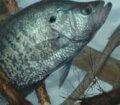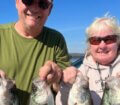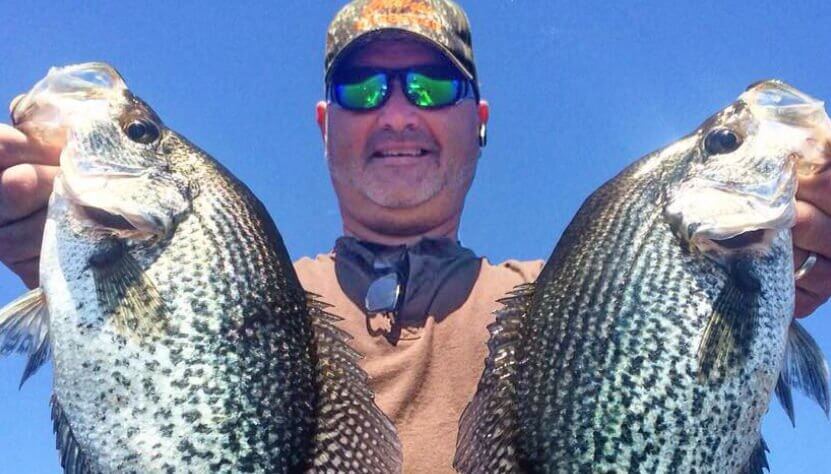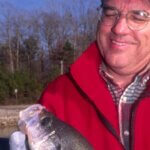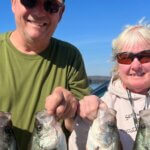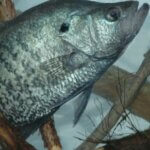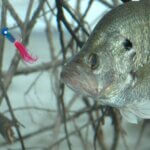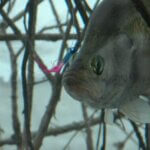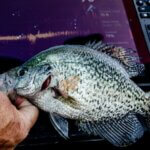Editor’s Note: Alabama’s Lake Guntersville, like other great lakes across the country, used to be well-known nationwide as one of the best crappie lakes. But then tournament bass fishermen discovered the lake’s potential and began to catch large numbers of big bass there. Guntersville often will have 200- + bass tournaments every year. The lake has received plenty of publicity about the large number of bass caught there. Many anglers have forgotten what an outstanding crappie lake Guntersville always has been, except for some locals. The lake’s guides are primarily bass guides. However, Phillip Criss of Albertville, Alabama, has guided crappie for 45 years. I first met Criss when he brought five huge bass weighing 5 – 7 pounds each into my brother’s taxidermy shop to be mounted on a stringer. As he took the bass from his big cooler, I noticed there were three or four 2+ pound crappie, if not better. I asked Criss, “Where’d you catch those giant crappie?” He answered, “In some of the same places where I caught those bass. I fished a spinner bait. If crappie doesn’t eat a spinner bait, they’re probably not the size crappie I want to keep.” Criss and I agreed we’d visit the Alabama River together, where he was fishing then. That was the beginning of a 30+ crappie-fishing relationship between Criss and me.
When I asked Phillip Cross what places he puts his treetops in, he answered, “We try and keep our treetops out of the main river. We have some sunken treetops out in the main river, but those treetops have to have a lot of weight to keep them in place when the fall rains come. We primarily look for ditches and creek channels off the main river to sink trees as crappie attractors.”
I inquired what had happened to the crappie fishermen at Guntersville when the lake got so much publicity from national and regional bass tournaments and where the crappie fishermen go.
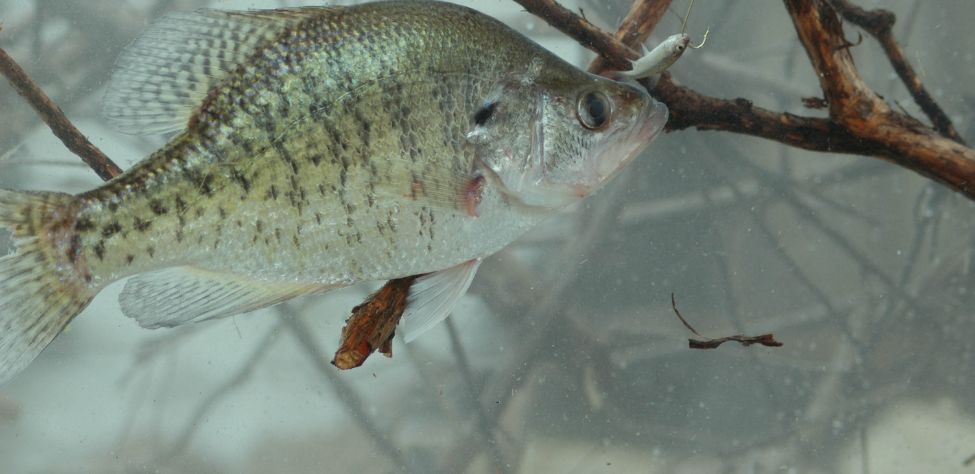
Criss explains, “There’s always been a group of diehard local crappie fishermen in the winter who go out at midnight or 1:00 am or 3:00 or 4:00 am before work to fish when the crappie are bunched up under the bridges. So, few people saw or knew about them or the crappie they were catching. They were reluctant to tell anybody what they were doing. That type of crappie fishing is popular from December through January when the weather is usually cold, often rainy, and sometimes even snowy.
“There may be a 30-foot-deep creek channel under the bridges, but the crappie may be holding at 10 – 20 feet deep. These old timers know where the crappie are. You can tell what’s happening when you see parked cars long before you reach a bridge. Remember, although crappie may be holding at 10 – 20 feet deep, they’ll come up in the water at 2 – 4 feet deep to eat bait.”
Criss says he transitioned from being strictly a bass-fishing guide to becoming a bass and crappie guide once people became more interested in catching crappie.
“At that time, I was conducting between 100 – 150 bass trips a year and maybe six crappie trips,” Criss reports. “I think the big change came when many national crappie-fishing tournaments started in Guntersville. People began to see that the crappie hadn’t left the lake and that there were plenty of big crappie in Guntersville Lake.
“My fishing partner now, Scott Jernigan, started fishing those crappie tournaments, and he’d often have a nice seven-fish limit. Once, he brought in 14.97 pounds – almost 15 pounds for seven fish – and he won some other tournaments that were held up here. When anglers watched these crappie tournaments on television and read about them in magazines, people wanted to go crappie fishing at Guntersville. Today, I’ll hear of about eight or 10, 3-pound crappie being caught at Guntersville and also hear of two to four crappie that weigh 4-pounds each.
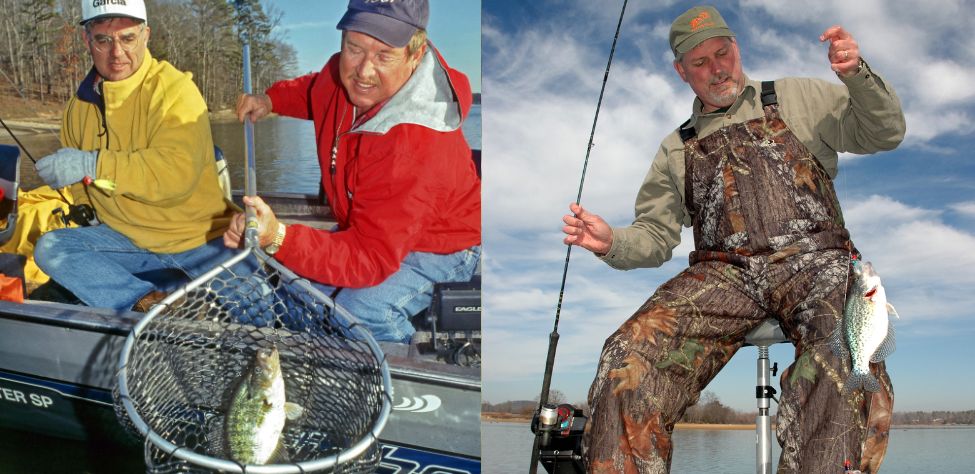
“When the word got out about crappie those sizes, crappie fishermen from all over the country took notice of Guntersville, showed up, and wanted to go crappie fishing at Guntersville. Once the crappie rush started, Guntersville Lake only had three or so crappie-fishing guides.
“But today, everybody wants to be a crappie guide. One of the reasons is that late summer, early fall, and throughout the fall, when bass fishing starts slowing down, that’s when the crappie fishing picks up here. When Scott and I didn’t have bass-fishing customers, we offered crappie trips. We learned to put out brush piles at different depths.
“Today, bass-fishing trips are about 60 percent of our business, and crappie trips are about 40 percent. However, because we put in so much structure last year, I’d say that guiding for crappie is about 50 percent of our business and bass about 50 percent of our business in 2023.
“I keep a logbook on every trip I make. In that logbook, I put what tree I’ve fished, where I’ve fished, what kind of bait I’m using, how many crappies we caught at what depth and what water temperature, and the average size of the crappie we caught that day. To stay on top of the crappie and to be able to produce 60 good-sized crappie for two clients, most days in four hours or less, I have to keep up with those kinds of statistics.”
Phillip Criss has his jigs custom-made by Gus White at Rocky Bottom Baits on Facebook. White makes any sizes and colors of crappie jigs.
You can phone Gus White at 304-545-4334. To reach Criss, call him at 205-461-5549. If he doesn’t answer, he’s probably out with a customer or sinking trees, but he will call you back.
Expert Guidebooks on Crappie Fishing: Best Sellers
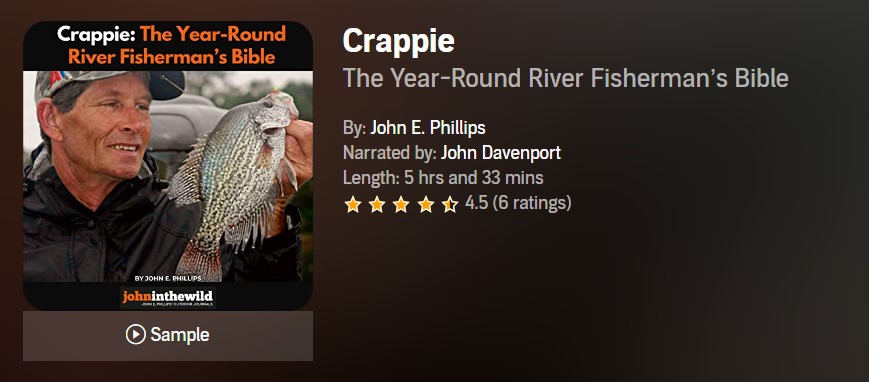
Fishing rivers for crappie and being able to find and catch speckled sides consistently has long been one of the mysteries in the crappie-fishing world.
“One of the reasons that river systems are so difficult to fish is because the water’s either rising or falling in them,” says Ott DeFoe, the 2019 Bassmaster Classic champion.
Rivers also are very susceptible to floods and droughts and constantly have current moving through them. Often fast current or slow current in rivers is created by rain or droughts upstream. When rivers flood, they can wash away fish habitat like logs, sunken trees, manmade brush piles and stake beds. But that’s the time when a river also creates new crappie hot spots that haven’t been available to the crappie or the fishermen before the flood.
Because river systems are so unpredictable, I’ve felt the best way to get the most useful information on how to fish rivers for crappie is to talk to numbers of anglers all over the nation to learn their best tactics.
In this book, I’ve gleaned crappie-fishing wisdom from three dozen crappie anglers and guides from a dozen states, who consistently catch crappie at all times of the year. The tournament crappie fishermen in this book fish most of the country at different times of the year on various river systems and lakes. And, these anglers use techniques you never may have considered, including:
- Setting up a casting ring with your electronics to keep you from getting too close to the crappie that are holding on underwater structure, while you’re fishing all the way around the structure;
- Buying an automotive laser temperature gauge to measure water temperature
- Evaluating the most-productive places to sink brush and other structure, according to prevailing wind direction, the crappie’s summer, fall, winter, and spring migration patterns, and other factors.
VERSIONS: AUDIBLE, KINDLE & PRINT
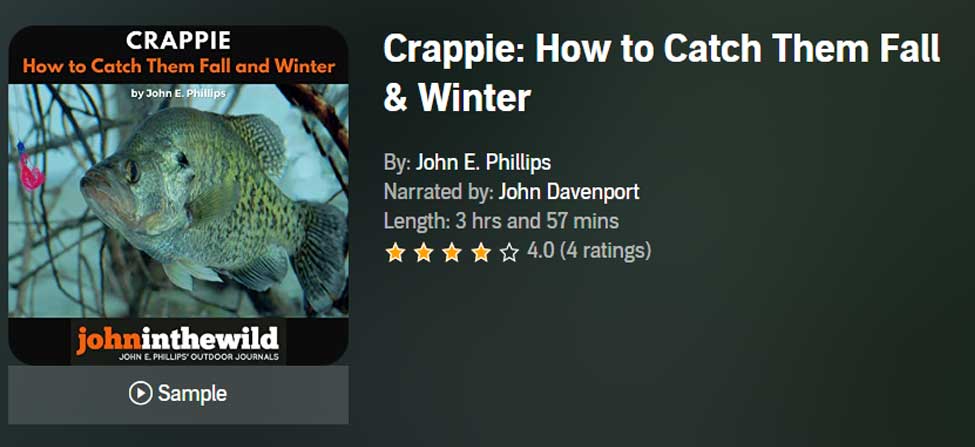
Crappie: How to Catch Them Fall & Winter
Yes, you can catch and eat crappie during the fall and winter months. Often, at many places, you’ll catch more and bigger crappies in the fall and winter than you do in the spring and summer. To learn where to find and how to catch cooler weather speckled sides, we’ve interviewed a wide variety of some of the nation’s best tournament crappie fishermen and guides.
Many of the individuals you’ll hear about in this audiobook are tournament crappie pros who travel the country to fish in crappie tournaments from New York to Florida and from Virginia to California. They use the latest crappie-finding equipment, the best poles, rods, reels, line, and the most-productive baits. Each of the people mentioned in this book has the ability to be dropped out of an airplane anywhere in the United States and catch crappie on any lake close to where they land that contains crappie.
From over 50 years of crappie-fishing experience, I’ve learned that you get the best advice by interviewing a large number of people who have different tactics and fish under various water, weather, and fishing-pressure conditions.
In this book, you will learn:
- How to spider-rig (slow-troll), which is one of the fastest-growing techniques for catching the most and biggest crappies in the shortest time
- How to catch crappie on crank baits and when and where using a crank bait is the most appropriate
- How to find areas of any lake that will hold large schools of crappies during the winter months – places you can return to time and again and expect them to be there
- Why competing in crappie tournaments is one of the quickest ways to learn how to catch more and bigger crappie faster
- Why and how to look for and catch the biggest crappie in a lake
VERSIONS: AUDIBLE, KINDLE & PRINT
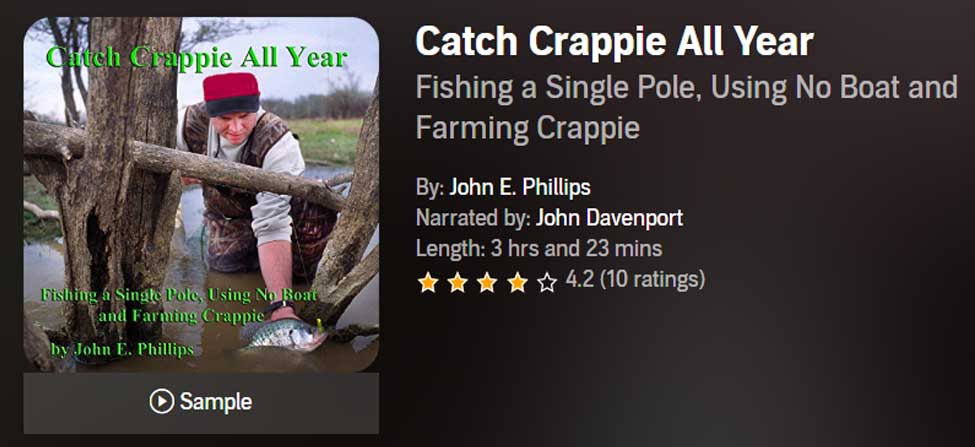
Catch Crappie All Year: Fishing a Single Pole, Using No Boat, and Farming Crappie
I’ve interviewed some of the best crappie fishermen in the nation for my new audiobook, Catch Crappie All Year: Fishing a Single Pole, Using No Boat and Farming Crappie to learn how, where, and when to catch the most crappie with or without a boat while single-pole fishing. I’ve also included information on how to grow a crop of crappie to catch every day of the year. Although I’ve fished in fully rigged crappie boats costing $45,000 – $90,000-plus that can have up to 16 rods at one time to slow troll, I still enjoy….
- Watching a quill cork sink in a brush top
- Fishing with an ultralight spinning rod
- Reeling jigs or minnows along a grass line and feeling that thud when a crappie takes the bait
- Fishing with family and friends, even if we all can’t fit in one boat
- Participating in less-expensive and hassle-free yet highly-productive crappie fishing like single poling
I’ve tried to capture in this new audiobook the old way of crappie fishing with new twists and detailed tactics to aid you in catching crappie all year.
VERSIONS: AUDIBLE, KINDLE & PRINT
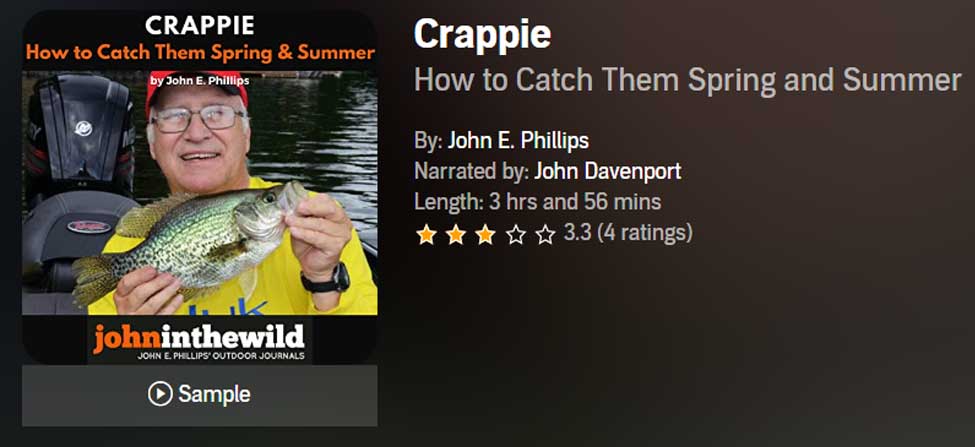
Crappie: How to Catch Them Spring and Summer
You can catch crappie all year long if you know where to find them and what techniques to use to catch them. However, crappie fishing is so technical these days, and we’ve learned so much about how to crappie fish because of the professional crappie-fishing circuits, that one book can’t hold all the information.
This book is the first of a three-part series on how, where, and when to catch crappie, with the best crappie fishermen in the nation. Many of these men have proven they are the best, because they’ve won crappie-fishing tournaments or been successful fishing guides for many years.
This audio version of Crappie: How to Catch Them Spring and Summer includes crappie pros like Ronnie Capps, who has won seven national championships and over $1 million with his partner Steve Coleman.
We also have Malcolm Lane, Stokes McClellan from North Carolina, Billy Blakeley from Reelfoot Lake, John Woods, Kent Driscoll, fishing biologist and professional basser Ken Cook, and many others. We asked the questions that crappie fishermen want answered about how to find and catch crappie during the spring and summer months, and these fishing tips are the result.
In the world of crappie fishing, no one man knows it all, and that’s why I’ve interviewed so many fishermen, asked so many questions, and tried to get so many answers for you about how to fish.
VERSIONS: AUDIBLE, KINDLE & PRINT
Tomorrow: Sinking Trees to Attract Crappie

